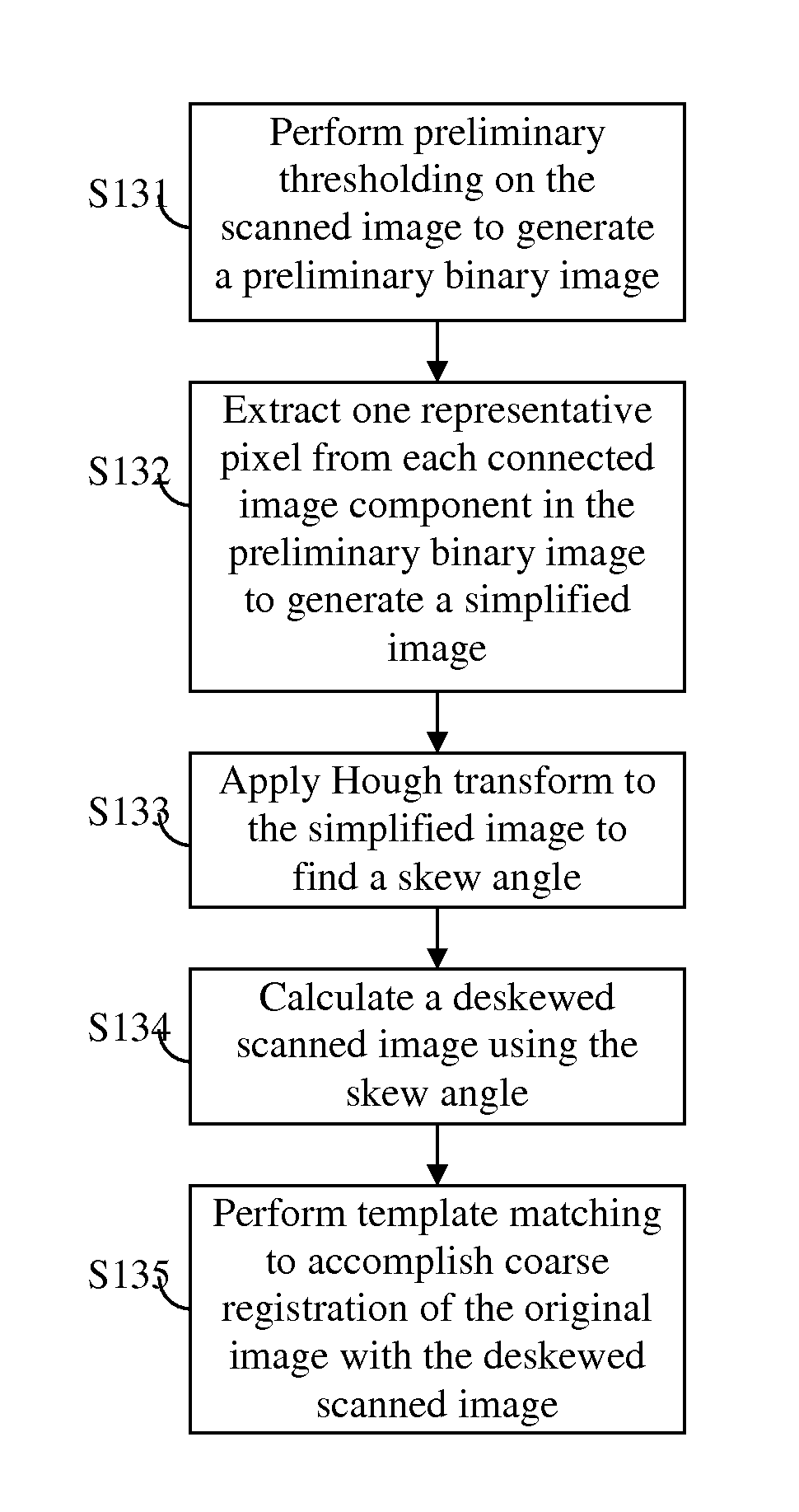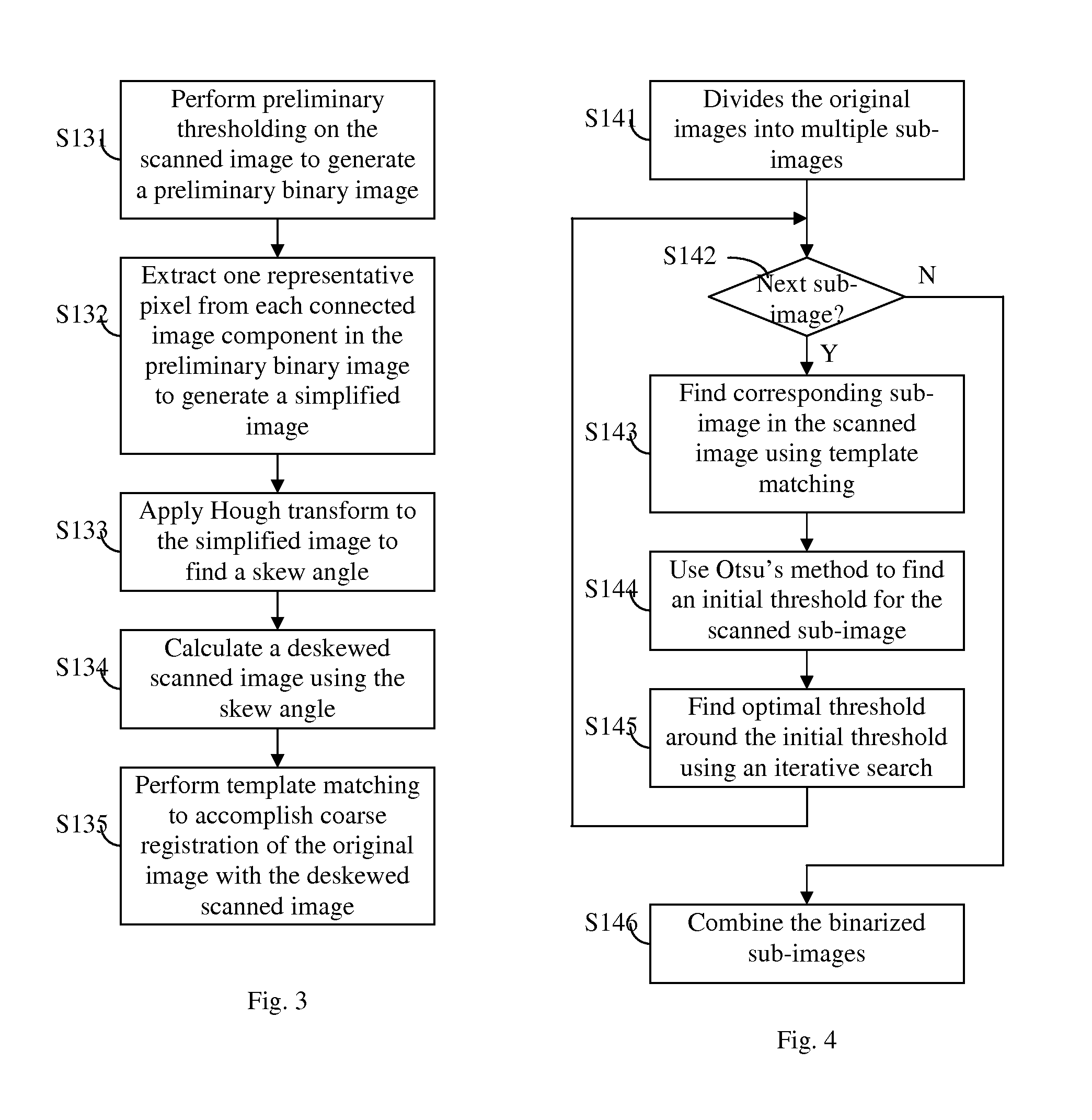Deblurring and supervised adaptive thresholding for print-and-scan document image evaluation
- Summary
- Abstract
- Description
- Claims
- Application Information
AI Technical Summary
Benefits of technology
Problems solved by technology
Method used
Image
Examples
Embodiment Construction
[0024]Embodiments of the present invention provide an effective and practical approach to generate a scanned binary image from a print-and-scan (PAS) process that closely matches the known original digital image (a binary image). According to embodiments of the present invention, a scanned document image (grayscale or colored) is deblurred using a point-spread function (PSF) derived from print-and-scan knife-edge responses. After image deskewing and preliminary registration, a supervised adaptive thresholding procedure is utilized to binarize the scanned image such that a measure of difference between the original and binarized images (e.g. the Euclidean distance) is minimized.
[0025]The supervised adaptive thresholding procedure applies a classical thresholding method proposed by Otsu (see Otsu) in a modified adaptive approach, combined with supervision using the original image and correction of asymmetric blurring during PAS. Since Otsu's method is simple and fast, it is feasible t...
PUM
 Login to View More
Login to View More Abstract
Description
Claims
Application Information
 Login to View More
Login to View More - R&D
- Intellectual Property
- Life Sciences
- Materials
- Tech Scout
- Unparalleled Data Quality
- Higher Quality Content
- 60% Fewer Hallucinations
Browse by: Latest US Patents, China's latest patents, Technical Efficacy Thesaurus, Application Domain, Technology Topic, Popular Technical Reports.
© 2025 PatSnap. All rights reserved.Legal|Privacy policy|Modern Slavery Act Transparency Statement|Sitemap|About US| Contact US: help@patsnap.com



